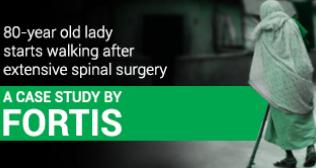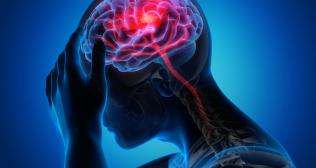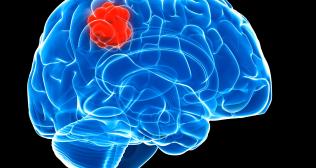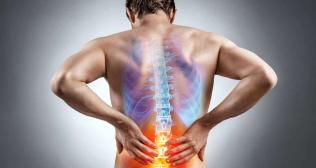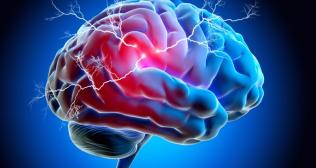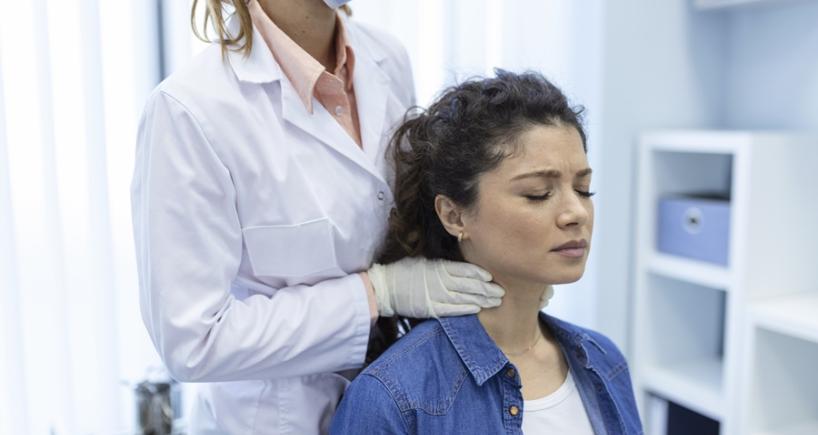
What is Cervical Radiculopathy: Causes, Symptoms, and Treatment
Introduction
Cervical radiculopathy is characterized by the compression or impairment of nerve roots in the cervical spine, leading to pain and other symptoms that radiate beyond the neck. This article explores the causes, risk factors, symptoms, and management of cervical radiculopathy to provide insights into this often debilitating condition.
Impact of Cervical Radiculopathy
Neck pain and cervical radiculopathy can significantly affect individuals of all ages, leading to discomfort and disability. Up to 40% of work absenteeism can be attributed to neck pain, highlighting the widespread impact of this condition.
Anatomy of the Cervical Spine and Nerves
To comprehend the intricacies of cervical radiculopathy, it is imperative to have a thorough understanding of the fundamental anatomy of the cervical spine and nerves. The cervical spine, consisting of seven vertebrae designated as C1 to C7, spans from the cranial base to the thoracic region. Intervertebral discs between each vertebra serve as shock absorbers, cushioning the spine during movement. The nerves stemming from the cervical spine play a crucial role in sensation and movement control in distinct body regions, including the arms, shoulders, and upper back. Understanding this anatomy lays the groundwork for comprehending how cervical radiculopathy affects nerve function and manifests symptoms throughout these areas.
Incidence and Affected Nerve Roots
Cervical radiculopathies manifest in around 85 individuals per 100,000, with a preference for the C7 nerve root. Other commonly affected nerve roots include C6, while C1 to C5 and C8 are less commonly involved.
Symptoms
Cervical radiculopathy presents with various signs and symptoms, depending on the segments involved and the severity of the neurological dysfunction. It is essential to correctly recognize the symptomatic area and distinguish between conditions that can imitate cervical radicular compression syndromes. Patients may experience neck and unilateral arm pain, accompanied by:
- Numbness
- Tingling, and
- Weakness in the arms, neck, chest, upper back, and shoulders
- Muscle weakness
- Impaired deep tendon reflexes
- Changes in bowel or bladder function
Act promptly by contacting your healthcare provider if you experience any symptoms associated with cervical radiculopathy. Early recognition and intervention are crucial for the effective management of cervical radiculopathy.
Causes
- Degeneration and Narrowing of Spinal Openings: Wear and tear over time can cause narrowing of the spaces between the vertebrae, resulting in compression of nerve roots.
- Damage to a Cervical Disk: Injury or degeneration can lead to disk damage, causing it to press on nearby nerve roots.
- Spinal Instability: Vertebrae may become unstable, leading to forward slippage and subsequent nerve root compression.
- Other Less Common Causes: These may include infection, cysts, and tumors, which can also exert pressure on the nerves in the neck.
Diagnosis
- Plain X-ray Studies: X-ray Commonly ordered for neck and upper extremity pain evaluation. Lateral views may reveal disc space narrowing, while oblique views can show foraminal narrowing at the level of radicular symptoms. Open-mouth views are reserved for suspected disruption of the atlantoaxial joint.
- Computed Tomography (CT) Scan: Helpful in acute settings for diagnosing traumatic injuries leading to radicular symptoms. However, CT is less effective for visualizing soft tissue abnormalities outside of traumatic contexts.
- Magnetic Resonance Imaging (MRI): Preferred modality for evaluating radiculopathies due to its excellent visualization of soft tissue abnormalities. MRI can identify disc herniations and nerve compressions, although they may not always be causative. False positives are possible.
- Electromyography (EMG): Useful for confirming dysfunction of the affected nerve root.
Management and Treatment Options
The management of cervical radiculopathy focuses on relieving symptoms, reducing inflammation, and improving spinal function. Treatment should be approached systematically, with surgery considered only after exhausting nonsurgical options.
Nonsurgical Treatments
- Oral Anti-Inflammatory Drugs: NSAIDs provide short-term relief by reducing inflammation.
- Physical Therapy: A well-designed program can offer significant relief and aid in recovery, regardless of surgical intervention.
- Translaminar Epidural Steroid Injections: These reduce nerve root inflammation and improve symptoms.
- Medical Durable Goods and Appliances: Cervical pillows and soft collars alleviate symptoms, especially during sleep.
- Tricyclic antidepressants and gabapentin: These are useful in managing the symptoms.
- Opioid Pain Medications: They are not recommended routinely but may help manage severe pain and are used with caution due to associated risks.
- Epidural Steroids: These provide significant pain relief and accelerate the return to normal function, often with long-lasting effects.
- Acupuncture: Adjunctive therapy has been shown to provide significant symptomatic relief.
- Chiropractic or Osteopathic Manipulation: Direct manipulation can worsen symptoms, while indirect techniques may offer relief.
Surgical Management
Surgery should be reserved for cases where nonsurgical methods fail and there’s acute neurological deterioration. These include:
- Anterior Approach: Involves complete discectomies filled by fusion or disc replacements
- Posterior Approach: Includes laminectomy, partial discectomy, and foraminotomy, with or without fusion
Collaborative Approach to Managing Cervical Radiculopathy
In addressing cervical radiculopathy, a collaborative healthcare team comprising specialists like neurologists, neuro or orthopedic surgeons, physical therapists, nurse practitioners, and primary care providers plays a crucial role. The management strategy should be systematic, considering both nonsurgical and surgical options.
While surgery can offer relief, its advantage over nonsurgical interventions in acute cases is debatable, as most instances resolve within 8 to 12 weeks without specific treatment. Therefore, initial supportive care typically involves nonsurgical approaches, such as anti-inflammatory medications, physical therapy, and translaminar epidural steroid injections.
Though various surgical procedures exist, they carry inherent risks of complications, and outcomes may not always meet expectations. Fostering collaboration among healthcare professionals and prioritizing evidence-based interventions can help optimize patient outcomes and alleviate the burden of cervical radiculopathy.
Conclusion
Cervical radiculopathy poses a complex challenge, affecting individuals of all ages. Knowledge of its causes, symptoms, and treatments enables effective management. Collaboration among healthcare professionals ensures holistic care, aiming to relieve symptoms and enhance the well-being of the affected individuals.
Popular Searches :
Hospitals: Cancer Hospital in Delhi | Best Heart Hospital in Delhi | Hospital in Amritsar | Hospital in Ludhiana | Hospitals in Mohali | Hospital in Faridabad | Hospitals in Gurgaon | Best Hospital in Jaipur | Hospitals in Greater Noida | Hospitals in Noida | Best Kidney Hospital in Kolkata | Best Hospital in Kolkata | Hospitals in Rajajinagar Bangalore | Hospitals in Richmond Road Bangalore | Hospitals in Nagarbhavi Bangalore | Hospital in Kalyan West | Hospitals in Mulund | Best Hospital in India | Gastroenterologist in Jaipur | Cardiology Hospital in India
Doctors: Dr. Rana Patir | Dr. Rajesh Benny | Dr. Rahul Bhargava | Dr. Jayant Arora | Dr. Anoop Misra | Dr. Manu Tiwari | Dr. Praveer Agarwal | Dr. Arup Ratan Dutta | Dr. Meenakshi Ahuja | Dr. Anoop Jhurani | Dr. Shivaji Basu | Dr. Subhash Jangid | Dr. Atul Mathur | Dr. Gurinder Bedi | Dr. Monika Wadhawan | Dr. Debasis Datta | Dr. Shrinivas Narayan | Dr. Praveen Gupta | Dr. Nitin Jha | Dr. Raghu Nagaraj | Dr. Ashok Seth | Dr. Sandeep Vaishya | Dr. Atul Mishra | Dr. Z S Meharwal | Dr. Ajay Bhalla | Dr. Atul Kumar Mittal | Dr. Arvind Kumar Khurana | Dr. Narayan Hulse | Dr. Samir Parikh | Dr. Amit Javed | Dr. Narayan Banerjee | Dr. Bimlesh Dhar Pandey | Dr. Arghya Chattopadhyay | Dr. G.R. Vijay Kumar | Dr Ashok Gupta | Dr. Gourdas Choudhuri | Dr. Sushrut Singh | Dr. N.C. Krishnamani | Dr. Atampreet Singh | Dr. Vivek Jawali | Dr. Sanjeev Gulati | Dr. Amite Pankaj Aggarwal | Dr. Ajay Kaul | Dr. Sunita Varma | Dr. Manoj Kumar Goel | Dr. R Muralidharan | Dr. Sushmita Roychowdhury | Dr. T.S. MAHANT | Dr. UDIPTA RAY | Dr. Aparna Jaswal | Dr. Ravul Jindal | Dr. Savyasachi Saxena | Dr. Ajay Kumar Kriplani | Dr. Nitesh Rohatgi | Dr. Anupam Jindal |
Specialties: Heart Lung Transplant | Orthopedic | Cardiology Interventional | Obstetrics & Gynaecology | Onco Radiation | Neurosurgery |







